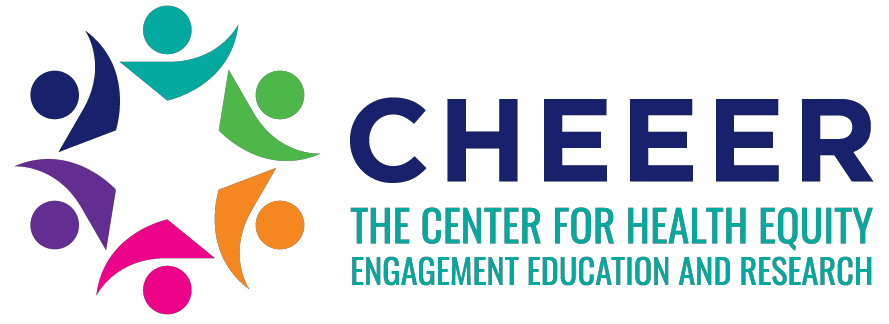By Joshua Beltran, Research Assistant, Center for Health Equity Engagement Education and Research
As the number of people vaccinated for COVID-19 increases there still exist multiple levels of health disparities occurring because of both the virus itself and the vaccine. Two recent articles, point out specific ways COVID-19 causes health disparities. The first article, from National Public Radio (NPR), points to medical terminology and jargon used to explain details of the virus. Non-English speakers in the U.S. already face a communication barrier when it comes to health care and adding the finer details of medical jargon compounds the issue, especially in regards to a new virus that has details still emerging. The second article, from Kaiser Health News (KHN), focuses on racial disparities persisting in vaccinations due to minority groups showing lower vaccination rates.
The focus of these two articles can be seen as a cause and effect of one another. The first article deals with how language can create a barrier in understanding the virus while the second shows how that same barrier can lead lower uptake of the vaccine.
I think it’s underrated how much the language barrier contributes to health disparities in general. The NPR article points out how medical jargon is difficult to understand for even native English speakers. It points to difficult to pronounce medication names and those with similar syllables as well as complicated prescription instructions as causes for confusion for patients. If we look at this existing issue through the lens of someone who doesn’t speak or read English, it’s easy to see how the problem escalates. Now if we put this in the context of the information regarding COVID-19, health disparities become inevitable, especially with new information rapidly being presented.

The article points out examples such as, “the common medical guidance that anyone who thinks they might have COVID-19 should call a doctor.” If this information is interpreted incorrectly or poorly the information being relayed could be translated as, “Don’t go to the emergency room until you call your doctor — even if you have symptoms of severe illness.” Which would prove to yield fatal results in some cases. The article expands on the issue of the constant updates by stating, “Simply keeping up with the latest understanding and guidance has been especially challenging for a number of groups in the U.S. — people who speak little or no English, many older adults, people with limited education or cognitive skills and really anyone who finds the often-opaque language of health care too difficult to understand.” This being stated by Michael Wolf, a professor at Northwestern University Feinberg School of Medicine who studies the ways health communication can go wrong. He continues to say, “Confusion over what a health provider or website is trying to convey can actually lead to misinformation and mistrust of the very things people need to protect themselves.” Which I feel is a good way to bridge the themes of the two articles, because that mistrust can lead to health disparities. The second article states “It’s also important to engage trusted institutions to administer vaccines.” This sentiment of relying on “trusted” institutions is the effect of previous cases of mistrust being displayed between health care and minority groups.
Social context is important to keep in mind when addressing the lack of vaccinations from minority groups, as well as health disparities in general. The KHN article highlights “nationally, a dearth of transportation options, an inability to take off from work to get a vaccine, and concerns about documentation and privacy have dampened uptake among Hispanics, according to experts.”
Cultural competency and awareness, I believe to be key in alleviating some of the issues addressed in both articles. By being more aware of things like language barriers, mistrust of healthcare institutions or other lack of transportation, it becomes more manageable to find solutions to disseminating vital health information and increasing vaccination rates.

